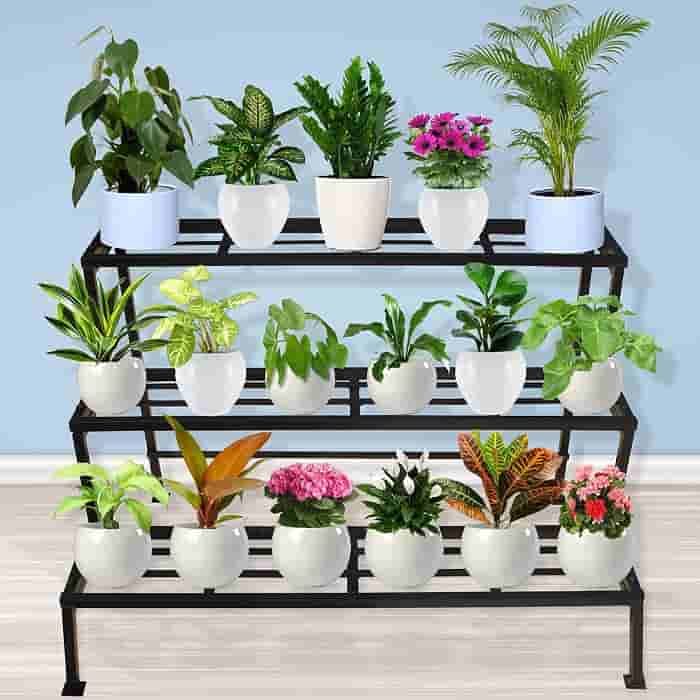The time for gardening during a drought condition is quite specific and requires special strategies to maintain success. It is in these times that there isn’t adequate water, and most plants lack and struggle to survive. However, thoughtful planning and appropriate techniques can help make your garden grow even in these situations.
-
Choose Drought-Resistant Plants
First, make a selection of plants whose natural aspect allows them to survive during drought. Drought-tolerant plants will not consume much water; hence, they are suitable for areas that experience a lack of water. Some native plants thrive well under dry conditions. For example, succulents and lavender tend to be relatively successful even when you apply less amount of water. Additionally, you are likely to require less maintenance in your garden by choosing such plants.
-
Mulch to Retain Moisture
Water conservation can be obtained through quite simple but effective ways, such as mulching in the garden. Mulch covers the soil as a protective layer, hence keeping it cool and moist. It minimises water evaporation, especially on hot sunny days. Furthermore, when mulch breaks down, it adds nutrients to the soil over time, improving its health. Good options for mulch are organic materials such as straw, wood chips, or compost. Therefore, application of mulch around the plants is a significant means of water conservation.
-
Water Smartly
For drought watering, one should use strategy and go for deep, not very frequent watering. This allows roots to stay in the soil. Once more roots dig in deeper, your likelihood of successfully getting through a drought increases. Additionally, it’s also most beneficial to water during early morning hours or late evening hours, when the evaporation will be minimal. Drip irrigation systems are also great as water goes directly to the roots.
-
Use Raised Beds and Containers
Raised beds and containers are perfectly suited to be used in drought-prone areas. They let you exercise better control over the quality of the soil and moisture levels. However, raised beds and containers drain considerably better and prevent the water from evaporating too much. Additionally, they let you use the water much more efficiently, targeting only the plants that most need it. An online plant nursery in Indore offers a wide variety of containers as well as kit options for raised beds that you can easily get started within your garden.
-
Improve Soil Health
Healthy soil retains much better water, especially during a drought. So, improving your soil structure can make a big difference. Organic matter such as compost or well-rotted manure retains more moisture. What’s more important, however, is it lets in more organic matter, which will encourage the beneficial organisms to help the plant grow. Healthy soil eventually leads to requiring less watering.
-
Practice Companion Planting
Companion planting practices retain water in some cases. Some plants help survive dry seasons when grown together. Some shallow-rooted plants grow well along with deep-rooted ones. Moreover, some ground-cover plants also shade the ground, which prevents the evaporation of water from the soil. You can consult for companion plants through online plant nurseries in Indore.
-
Harvest Rainwater
Every drop counts in a drought. One tactic you can use to maximise your supply is by harvesting rainwater. Set up those rain barrels under your downspouts to collect water from your roof every time it rains. This is also free of chemicals, so it’s better for plants compared to this source. Storing rainwater will give you a backlog supply during dry spells.
-
Use Shade Wisely
Shade is essential to drought gardening. It reduces the amount of direct sunlight your plants can receive; hence, water evaporation decreases. Additionally, partial shadings through selective shade cloths and taller plants that create shade for themselves will offer protection to the more sensitive plants from direct intense sunlight. Besides, shade-tolerant plants like ferns or hostas also flourish when watered less frequently under shade conditions.
-
Group Plants by Water Needs
Grouping plants into different groups concerning the water needs can be an efficient way of saving water. For example, you would put together drought-tolerant plants in one area and those requiring more water in another area. Therefore, you would then concentrate on watering where it is most needed. The approach ensures that no waste of water also occurs, with proper care given to every plant.
-
Explore Low-Water Landscaping
Another approach is low-water landscaping, commonly referred to as xeriscaping. Xeriscaping is designing your garden with minimal water use in mind. A technique that often relies on rocks, gravel, and native plants that thrive in drier conditions, this approach also reduces the overall water demand of your garden. A good thing also is that your landscape will be a beautiful, drought-tolerant, and minimally maintained landscape.
Conclusion
Gardening in drought conditions is easy when carried out. Some plants are tolerable and resistant to drought, and you can conserve water through methods of saving them in the soil. Soil enhancement also tends to boost its strength when gardening in drought conditions. Some people say mulching, smart watering, and using shade make a huge difference. Online indoor plants in Indore and online outdoor plants in Indore offer a wide range of plants for the conditions.
Additionally, almost all other sources, including the best plant nursery in indore, will guide you to build a garden that can be drought-tolerant. If you are well planned and take proper care of your garden, then it could flourish in some of the most adverse climatic conditions, as well.










Recent Comments